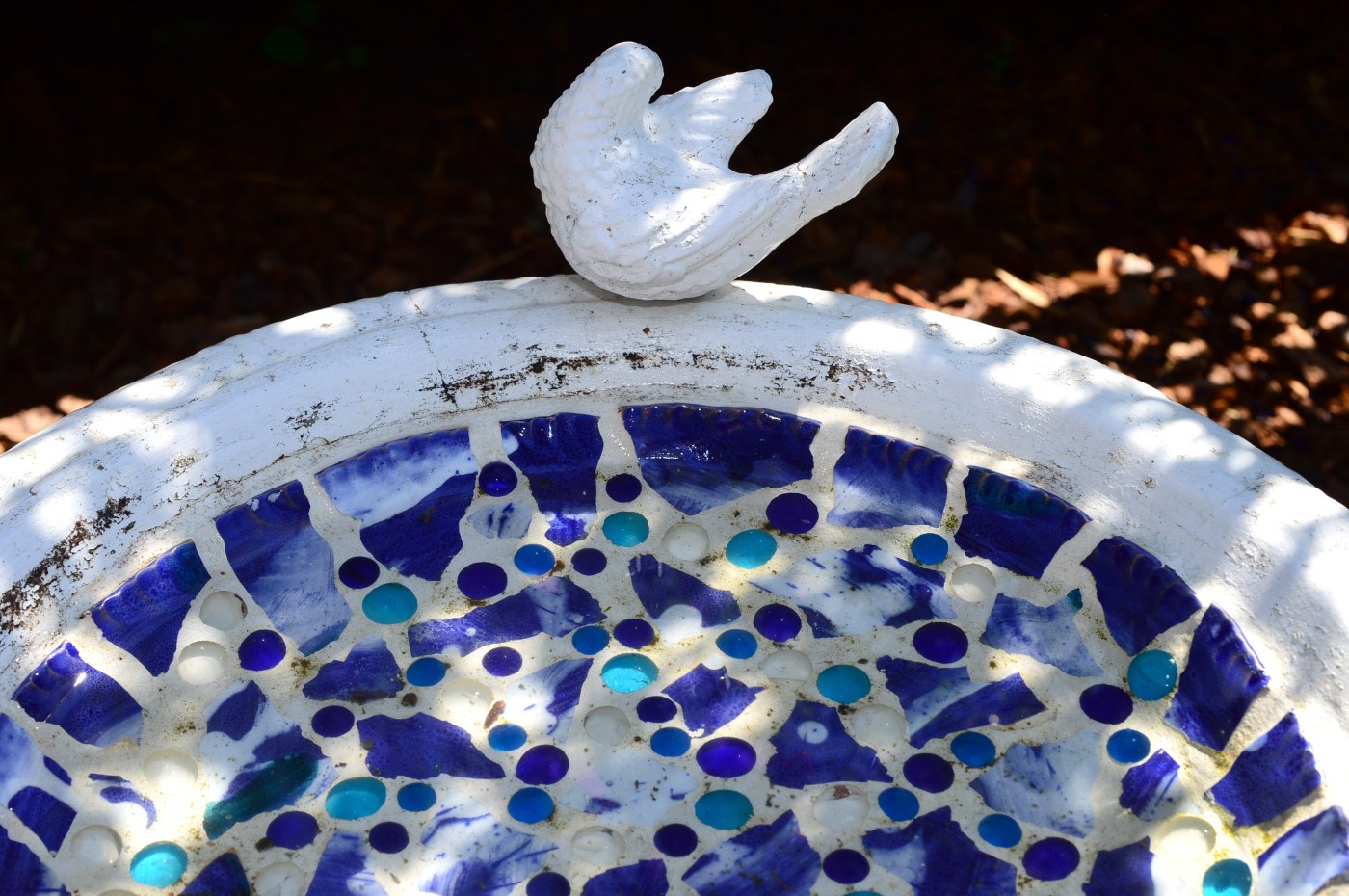DEAR JOAN: It has been said that, due to the avian flu, we should not have still water in our bird baths. You suggested getting something to keep the water moving in the bird bath. I have not found anything that works and is also affordable.
Should I just toss my two bird baths or do you think we will be able to keep still water in them?
— Charlene, San Jose
DEAR CHARLENE: After a relatively quiet summer for the bird flu, H5N1 spiked when water fowl began their migration. Experts and officials have renewed the call for care and caution when being around wild birds and domestic fowl, and in putting out birdfeeders and baths.
But that doesn’t mean you can’t feed wild birds or have bird baths. It just means you need to be scrupulous in maintaining them.
Birdfeeders should be cleaned weekly, and removed if you start seeing sick or dying birds in your yard. Bird baths need daily maintenance. Empty the bird baths and wash them with a diluted solution of vinegar and water, and dry before refilling. A good habit would be to empty them in the evening, wash them and refill in the morning.
As we approach winter and the start of the rainy season, bird baths become less important to our feathered friends. They can more readily find natural water sources. Food, however, becomes more scarce in winter, which means birdfeeders play an important role in supplementing a bird’s diet.
Be sure to keep the feeders clean, and check them often during the rainy season to make sure the seed remains dry. Wet or damp bird seed can quickly mold, which can cause illnesses in birds.
DEAR JOAN: A recent question you published regarding decorative bird boxes prompted me to write about my experience this spring and summer.
Years ago I bought a plain wooden bluebird box and it has had nests most years since. After attending a talk on the need to provide for more cavity nesters, I constructed three more boxes of the same design. All four were successfully used this year by four different species: Western bluebirds, violet-green swallows, brown swallows and ash-throated flycatchers. A very general purpose bird box design is apparently in high demand in our area.
— Bob, Saratoga
DEAR BOB: Those Western bluebird boxes are perfect for a number of small cavity dwelling birds. With the help of the California Bluebird Recovery Program, www.cbrp.org, we put some nesting boxes at Our Garden, the Contra Costa Master Gardeners’ demonstration garden founded by the Bay Area News Group, in Walnut Creek.
I kept an eye on them and when I first noticed some straw poking out of a box, I opened it to check. I’m not sure who was more startled — me or the Oak titmouse that had built a substantial nest in the box and laid six eggs. I’ve since learned to knock first. We also had a Western bluebird nest in another box, so it was a big win all around.
The Animal Life column runs on Mondays. Contact Joan Morris at [email protected].





